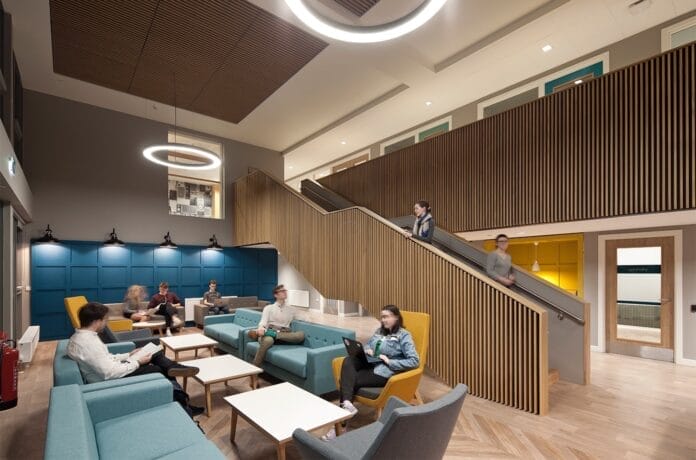
Director & Head of Design, Philip Watson responds to the recent AJ100 survey and the lack of importance that practices are placing on post-occupancy evaluation.
‘Sadly, our profession is woeful at understanding the impact that design has on building users and local communities.’
Launched last week, the AJ100 survey revealed that post-occupancy performance evaluation is ‘always’ done by just 4 per cent of AJ100 practices, ‘frequently’ done by 22 per cent, while a quarter of firms never do so and around a half (48 per cent) only seek to evaluate the performance of their projects ‘occasionally’.
While this apparent disinterest in the outcomes of built projects may seem shocking, Director and Head of Design, Philip Watson, finds the results unsurprising:
‘Sadly, our profession is woeful at understanding the impact that design has on building users and local communities. You’d think that designers would want to be able to demonstrate their value in this way. By ignoring an evidence-based approach to post-occupancy evaluation we undermine our work and diminish the importance of design on people’s lives, exposing ourselves to accusations of superficiality. We appear to be a profession that just wants to sell design rather than understand it. We must address this issue head-on.’
At HLM, we’ve invested in an innovative and unique toolkit that by using technology and data on existing projects will improve outcomes for our clients and the people that use the places and spaces we help share in the future.
It’s called the ‘Thoughtful Design Toolkit’ and is a suite of digital tools – HLM_Insight, HLM_Healthcheck and HLM_Impact – that enable designers and commissioning clients to define, develop and assess their building projects in an evidence-based way.
We’ve created it to addresses the challenge that clients and designers face, ensuring that the vision and ambition of a project is met and delivered from briefing to completion by using data-enabled processes throughout the life of the project.
HLM_Impact, is a post-occupancy evaluation tool that tests whether the brief and design ambitions have been realised in the finished building and acts as a data base for best practice. This in-turn informs the briefing process creating a virtuous circle of information.
The web-based tool gathers responses that can be compared with the Insight data to see where the building is and is not performing against the brief. This bespoke POE questionnaire draws on several industry standards to create a rounded, easy-to-use feedback platform that considers qualitative and quantitative aspects of completed projects.
Another key innovation of this tool is that it enables a Social Return On Investment (SROI) calculation to be undertaken based on the data outputs. By working with social value consultants, we can develop this aspect of the tool. It estimates the social value generated by the investment in a monetarized way which we believe will become an industry standard for all future public buildings in years to come.
Last year, we partnered with HATCH Regeneris to carry out an assessment of the social value it has delivered in the design of two new student halls of residences at the University of St Andrews, Scotland. The project aim was to create a new socially driven and environmentally sustainable model for student accommodation. Below shows the results of the survey and we plan to use this data to improve and inform future projects across all sectors, not just Higher Education.
For the full report click here
HLM recognises the importance of the economic, environmental, and social value of design and is driven by a sense of social purpose. We recognise the importance of early stakeholder engagement, informed design practices, and consideration of outcomes and impact across the design process and during operation and call for all practices to act on this outcome and improve space and place. We’ll be launching more information on the Thoughtful Design Toolkit shortly. In the meantime, contact Philip Watson.


